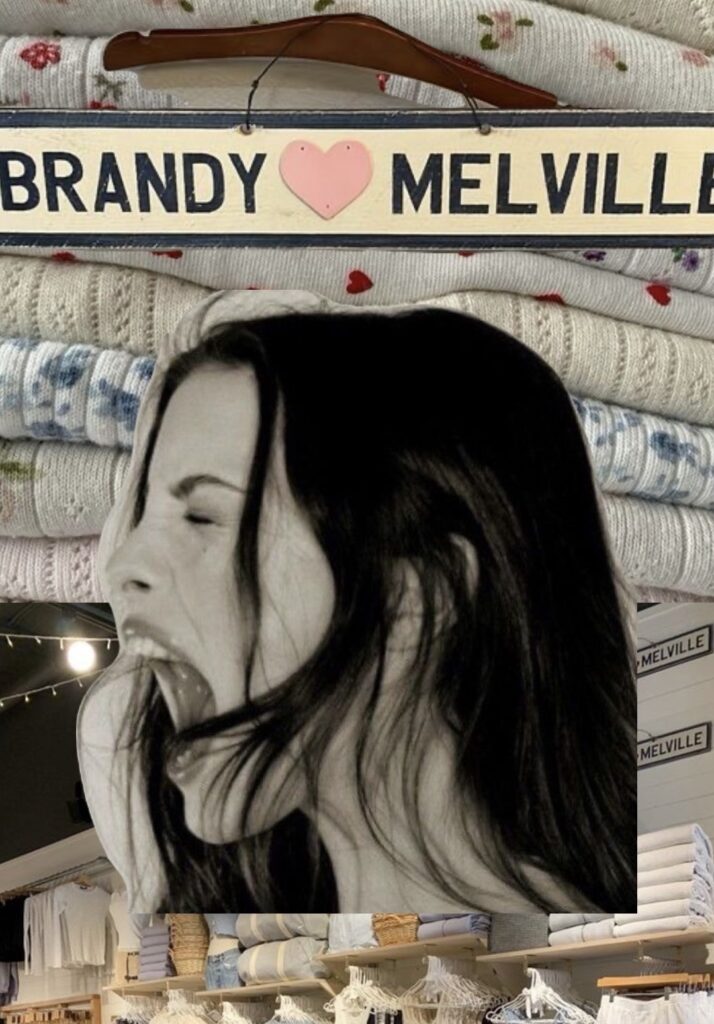
From a marketing perspective, Brandy Melville is genius branding for a generation driven by targeted social media presence; if you’re aware of the brand, a certain image almost immediately springs to memory, e.g. a very chic Americana teenager, the kind of clothing adorned by the effortlessly cool girl, maybe she lives a luxurious life at the beach? Or maybe she’s a master of the ‘uptown girl’ aesthetic? Regardless of the specifications of your mental image, Brandy Melville has a mysterious way of getting their brand image out even if you cannot recall ever seeing a single advertisement from the company itself. The brand’s success is built on a foundation of questionable practices, from its discriminatory hiring policies to its promotion of unrealistic body standards.
Initially started by Italian business owner, Silvio Marsan, the brand didn’t entirely take flight until his son and successor to the brand’s ownership Stephan Marsan took over. Stephan had a unique idea to have the brand’s image be entirely driven by the target audience themselves, young teenage girls. Stephan strove to accumulate a workforce of entirely conventionally attractive young girls to run the storefronts and the social media presence of Brandy Melville. What is arguably already an incredibly unconventional business model becomes stranger as many teenage employees recently spoke out on TikTok and in a recent documentary titled Brandy Hellville & The Cult of Fast Fashion about bizarre and abusive requirements from Brandy Melville’s higher-ups. The girls were required to send in full body pictures when clocking in for their shifts, and Corporate Brandy would, in turn, post similar images of girls adorning almost identical outfits, and in some cases, the clothing would show up on the Brandy Melville sales floor. The questionable business practices run deeper as a frequent trend Stephen had in his hiring process was only placing applicants of color in the storage handling sections of the stores whereas their white counterparts got to man the front. These allegations were supported by the numerous accounts included in the documentary, and can be directly traced back to Marsan himself disgustingly joking “If you’re white- you’re in sight” in a company group text.
Brandy Melville’s clothing itself is popularly poked fun of as it’s all one-size, not an inclusive size, but rather a “one size fits most” model whose measurements are the same as XS-S sizing utilized in other stores. The brand is not shy about its lack of inclusivity either, Stephan outright told his employees ‘Take everything but the three smallest sizes off the floor.’ After backlash from customers, the line was changed to “one size fits most” still modeled after a size 4. The clothing is often regarded for its soft and stretchy fabric which is particularly easy to manufacture as most of it is just mass-produced and cheap polyester.
An interesting fact about the brand is that for some unknown reason, they sell Olive Oil on their website, which can be traced back to the company’s roots in Italian culture, but is often found comical by Melville critics online. Another dubious business venture from Marsan is the recent emergence of the Brandy Melville band, a group of young employees that thus far have only put out covers, including “It’s A Man’s Man’s Man’s World” by James Brown. The band has no official title or means of releasing music aside from a couple of videos posted on social media from various accounts all filmed in a Brandy Melville-owned recording studio. The only traces of where this band started are from TikTok of girls getting emails from Brandy Melville requesting them to apply for a position in these music groups.
While Brandy Melville may excel in branding and marketing, its negative impact on society and the environment cannot be ignored. As consumers, it’s crucial to hold companies accountable for their actions and demand greater transparency and ethical practices in the fashion industry.
